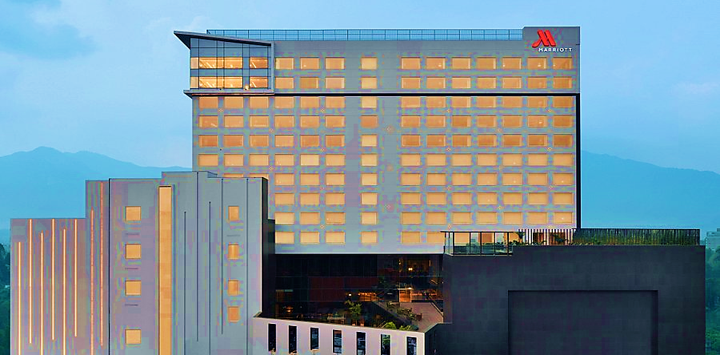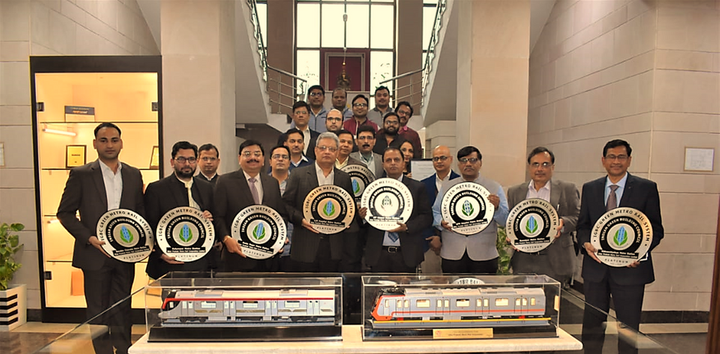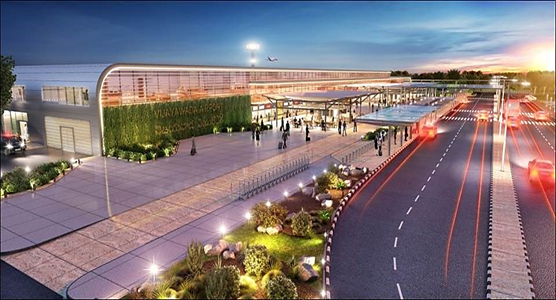Roadmap for Indian Railways Towards Net-Zero Energy
By: Shivani Rani, Ashish Kumar and Mijul Saxena
Introduction
Since its first journey in 1851, Indian Railways has been the lifeline of the nation, evolving from steam-powered locomotives to one of the largest rail networks in the world. Over the past decade, the railway network has expanded significantly, with 31,180 track kilometers commissioned and the pace of track laying increasing from 4 km per day in 2014-15 to 14.54 km per day in 2023-24. Additionally, 41,655 Route Kilometers (RKMs) have been electrified between 2014 and 2024, accelerating the shift towards energy-efficient rail transport [1]. Recognizing the urgent need for a transition towards sustainability, Indian Railways has boarded an electrification journey, reducing its dependence on fossil fuels while integrating renewable energy solutions. The shift towards sustainable practices is not just an environmental necessity but also a strategic move to enhance operational efficiency and resilience. To accelerate this transition, GreenTree conducted a comprehensive energy audit across key railway infrastructure, identifying opportunities to optimize energy use, integrate renewables, and reduce carbon emissions. The study covered various railway buildings—stations, administrative blocks, residential blocks, workshops, and manufacturing units—analyzing their energy consumption patterns and proposing targeted solutions. The findings provide a structured roadmap for Indian Railways to achieve net-zero energy, reinforcing its commitment to sustainability while ensuring seamless and efficient operations. This initiative is a step toward transforming Indian Railways into a model of sustainable transportation, aligning with India's broader environmental goals and setting the stage for a greener, more energy-efficient future.
Key Findings and Proposed ENCON Measures
|
Building Type |
Building Name |
Few Proposed ENCON Measures |
Energy Savings Potential |
CO₂ Reduction Potential |
|
Railway Station |
Rewari Railway Station |
·
Discontinue charging on the primary
side of the transformers and shift the ACBs. ·
Installation of occupancy-based
sensors. ·
Replace fans and ACs with efficient ones. |
14.3% |
171.63 tons/year |
|
Administrative Blocks |
Western Railway
Headquarter |
·
Consolidate the load onto a
single transformer. ·
Replace fans and ACs with efficient
ones. ·
Installation of automation sensors
for split ACs. |
15% |
264.44 tons/year |
|
Educational Institute |
Indian Railways
Institute of Electrical Engineering |
·
Installation of roof insulation and
solar film for glazing. ·
Installation of occupancy-based
sensors in toilets and implement a card-key system for all rooms. ·
Replace pumps, fans, and ACs with
efficient ones. ·
Installation of solar water
heaters. |
66% |
130.75 tons/year |
|
Manufacturing Units |
Integral Coach
Factory |
·
Furnace insulation was required. ·
Replace pumps, fans, and ACs with
efficient ones. ·
Solar film glazing was recommended. ·
The installation of a VFD chiller
and sensors for split ACs was suggested. |
35% |
2,076.11 tons/year |
|
Workshops |
Jagadhri
Workshop |
·
Stop charging at the primary side of
standby transformers. ·
Preventing water leakages from ETP
treated water, air compressor room, buffer section, etc. ·
Reduce lighting usage. ·
Replace pumps, fans, and ACs with
efficient ones. |
24.6% |
1,008.27 tons/year |
Purpose and Role of GreenTree (GT)
GreenTree was tasked with analyzing the energy footprint of Indian Railways and proposing a comprehensive roadmap to achieve net-zero energy status. This involved:
- Conducting detailed energy audits for each building type.
- Identifying specific energy-saving opportunities and estimating their financial and carbon benefits.
- Proposing scalable ENCON solutions like renewable energy integration (solar PV), advanced building management systems (BMS), and process optimisations.
- Charting a replicable framework to align Indian Railways with global sustainability benchmarks.
GT also provided technical support to evaluate implementation feasibility, measure potential outcomes, and integrate renewable energy sources to offset residual emissions.
Summary and Outcomes
The audit identified a 15% energy-saving potential across all building types, leading to significant reductions in energy costs and carbon emissions. GreenTree’s roadmap outlines a path for Indian Railways to achieve net-zero energy while serving as a model for sustainability in the transportation sector. The proposed solutions are both technically feasible and economically viable, emphasizing long-term energy security and carbon neutrality.





